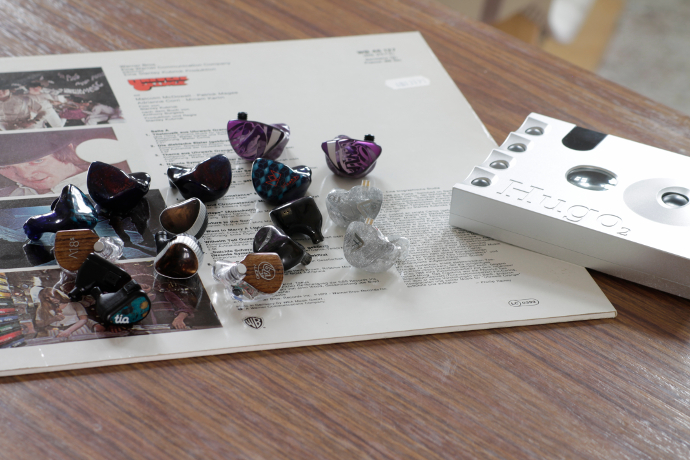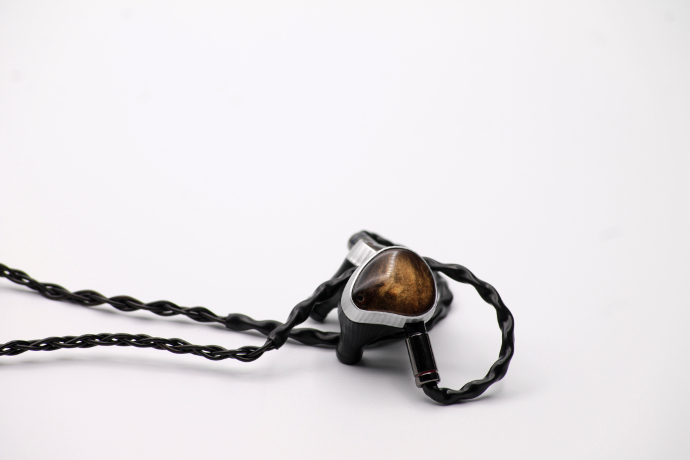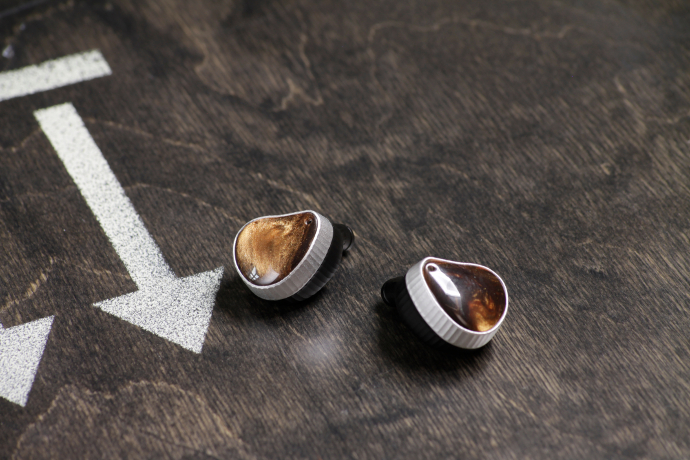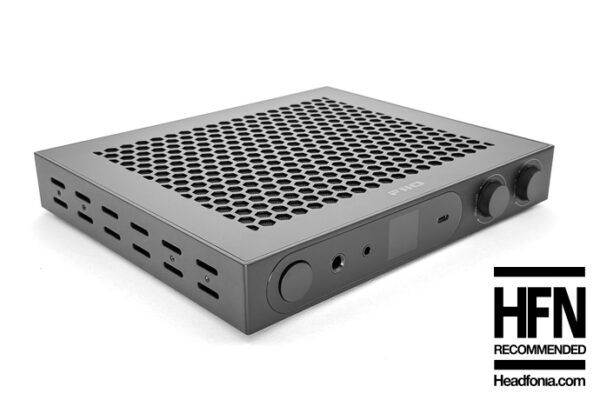Empire Ears – Odin (2DD/5BA/4estat – 3,349$)
The Odin has just been released to the market, although I’ve had mine for a couple of months now. It’s EE’s latest top of the line release, which uses all their proprietary technologies and the second Gen electet/e-stat drivers from Sonion.
Empire Ears’ hybrid monitors are known for a rather forward sounding low end. Even EE touts their proprietary dynamic drivers as sub woofers, which already says a lot in my opinion. Both monitors go very low into the sub-bass regions. But they do it differently. The Sultan goes there with more kick and a tighter grip, while the Odin goes there with higher physicality and a more visceral sound. The Odin has a bigger and bolder low-end, while the Sultan is tighter bound. It feels more coherent with the rest of the spectrum in direct comparison to the Odin. The Odin on the other hand has better texturing and resolution in the bass segment.
Noble’s IEM puts the mids a bit more forward, it gives them a slightly brighter tone compared to EE’s Odin. The Odin appears richer, denser and fuller but also more laid-back than the Sultan. The Sultan provides higher vocal clarity to me than Odin. The Odin has a darker background and gives more contrast between the musicians than the Sultan. It also has higher resolution and sharper imaging.
The Sultan again comes out on top, when we look at sound-stage depth and layering. The Odin however, does take the crown for a wider stage. It renders the whole picture at a slightly higher rate and gives an overall clearer image. Both of these monitors control their scene with good authority. Even in hectic scenes neither of them loses sight.
Treble on both the EE and Noble monitors are tuned with certain richness. The Sultan does have a brighter tuned top end though. So treble heads might dig that more, but people with lower tolerance might not. Both have very good top end extension, and to me, there’s no clear winner here.

64 Audio – A18s (18BA – 2,999$)
The A18s is 64 Audio’s latest co-flagship CIEM, using non less than 18 balanced armature drivers per side. It builds up on the infamous A18t, but tuned a little differently. One unique thing about the A18s is, that customers can change signatures of their IEMs by switching external modules. So, in fact what you’ll get is two monitors in one. We will concentrate on the m20 loaded A18s here.
The Sultan reaches deeper into sub-bass with more prominence. The A18s does have bigger body and more weight in the bass overall, but the Sultan is faster and a bit tighter in comparison. 64 Audio’s A18s also gives mid and upper bass a more forward placement in the signature, compared to the Sultan. The Sultan’s bass is more organic, it has more air in it and it features a finer texture. This is where the A18s struggles in my opinion, but that’s a limitation of the driver technology.
The mids on the A18s sound warmer, fuller and smoother than the Sultan’s. The A18s gives a more physical sounding lower mid-range, that sports more weight than the one of the Sultan. The Noble sounds a touch more open than the A18s. The A18s has a richer and more intense sound compared to the Sultan to me.
In terms of technical performance, the A18s is one of the top dogs to beat. And the Sultan does put up a fight in some areas, but has to accept second place in others. For example, where the Sultan outshines the A18s to me, is the depth and layering. Here it simply does a better job than the A18s. But when it comes to sound-stage width and height, there’s no denying that the A18s wins. The 64 Audio CIEM also has higher resolution, a darker background and it provides finer resolved micro details.
Treble on the Sultan is a bit cleaner and richer, whereas the A18s has a clearer and brighter pitched tune there. The Sultan and the A18s both have impressive extension into the highest registers, but the Sultan seems to put tones past 16kHz more upfront than the A18s. Both monitors provide excellent air to the spectrum, and I can’t say if one bests the other here.

Conclusion:
Noble Audio’s latest flagship introduction has shown me once again what this company can do. The build quality is absolutely amazing, and I wish more companies would take note here. As this is how you do it. With the Sultan Noble has set the bar very high in terms of design aesthetics and build quality.
The Sultan is an IEM that combines two important aspects of sound. Enjoyment and excitement. While I have other monitors that are better in one of these areas separately, they often lack the other. By combining both, the Sultan might come short in character, but it puts up one hell of a ride. Early on, after I received the Sultan from Noble Audio, I spoke to a friend about it. Saying that it does many things really well, but misses a stand-out quality. He, being a wine aficionado, replied by saying, that he for one has stopped looking for something unique in a wine, but enjoys the one that just does everything. That’s pretty much the Sultan. It does everything.
If you are looking for an IEM that can handle all genres and styles, and that offers the best build out there, give the Noble Sultan a sincere consideration. It’s a good one.








Steve
I you were to pick one which one would you buy, Odin or Sultan?